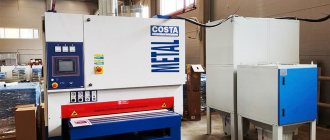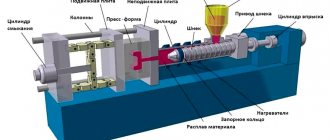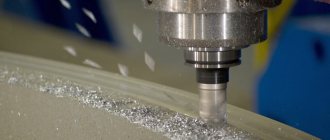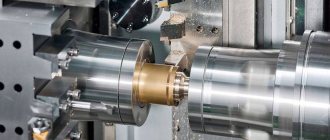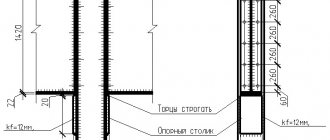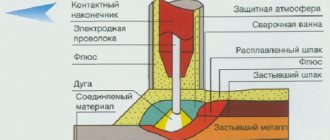The first steps of metallurgy
Information about the first metallurgists is available to humanity thanks to archaeologists. The prehistoric era gave rise to attempts to obtain and process metal.
At that time, there were remains of meteorites on Earth that gave the first iron into the hands of man. Gradually, the mining and processing of gold and copper began.
The first processing method was cold forging. It was used to give iron shape. The first product was weapon parts - spear points, arrowheads.
They also tried to use the valuable metal to create dishes and simple tools.
The first breakthrough in metallurgy was steel smelting. Early evidence of this approach dates back to the 12th century BC. At that time, steel was melted in India and cheese-blowing furnaces were used for this. Similar means were also used in Anatolia and the Caucasus. The methods were remarkably similar.
In Africa they also tried to melt iron and forge it to create weapons. Due to the inability of ancient people to protect steel from corrosion, artifacts from that era have reached us in poor condition, but the evidence is still there.
METAL DRAWING TECHNIQUE
The formation and development of metal drawing technology occurred under the influence of the ever-increasing consumption of wire and wire products, which were widely used in the manufacture of various jewelry and household items. The production of jewelry and gold-embroidered clothing became widespread, especially during the slave period. Jewelry crafts consumed a huge amount of precious metals and their alloys. Gold and silver wire were also used as an equivalent of value in trade. The demand for wire contributed to the improvement of drawing technology.
Which metals were the first to be processed?
It all started with copper. Man discovered the first deposits by accident - then they were close to the surface.
Even 8 thousand years BC, people tried to process copper ingots, but did not use professional methods for this.
It was rough, but it was a better alternative to bone or sharpened wood.
The next metal that humanity added to its treasury was bronze. This is a product of the beginning of metal processing, when they learned to melt and mix them. This is how the combination of tin and copper came into being, often used in jewelry making.
Only the richest members of society could afford such items, but even today relics often surprise jewelers with their non-standard approach to processing and elegance of form.
It is believed that man did not conduct any directed experiments to obtain bronze. It was found by accident during mixing.
The resulting alloy surprised us with its hardness and ease of processing - due to the addition of tin, it was much more ductile than the materials used at that time. The recipe was fixed, and blacksmiths began to use it to create tools.
The products did not fail as quickly as stone or copper ones and weighed little.
The first millennium BC was marked by the advent of the Iron Age. Already from the name it is clear that at that time people discovered meteorite iron and began to try to process it. But only in the third century BC this material began to be used en masse.
It came to the point that instead of searching for meteorites rich in iron, they began to extract it from the depths. The metal became widespread and most of its analogues faded into the background.
FORMATION AND DEVELOPMENT OF FORGING AND STAMPING TECHNOLOGY
Forging is the oldest method of metal forming. Its appearance coincides with the period of humanity's transition from the Stone Age to the Bronze Age. Native copper was the first metal that came into use among ancient peoples precisely through the use of forging. Mastering the method of processing native metal by forging is inextricably linked with a person’s long-term accumulation of skills and experience associated with the manufacture of stone tools and weapons by processing stone “upholstery” with a stone hammer. Native copper, which primitive people at first also considered a type of stone, when struck by a stone hammer did not produce the characteristic chips of stone (flint), but changed its shape and size without disturbing the continuity of the material. This remarkable technological property of the “new stone” was a powerful incentive for the extraction of native metal and its use by humans. In addition, it was observed that forging increases the hardness and strength of the metal and plays a vital role in the creation of more effective tools and weapons. Forging was the first and only way to increase the hardness of copper.
Modern historical science connects the origin of metal forging technology with the development of early centers of metallurgy in the ancient regions of Central Asia and the Middle East. Such areas were Anatolia, the interfluve of the Tigris and Euphrates and the Nile Valley. The time of appearance and application of some types and techniques of cold and then hot forging dates back to the 7th-6th millennium BC.
At first, ordinary pieces of hard stone were used as a hammer. The primitive craftsman, holding a stone in his hand, struck it at a piece of native or smelted metal. Such a primitive forging technique probably existed at first among all ancient peoples. Then the evolution of this simplest forging method led to the creation of the prototype of the modern hammer, equipped with a handle or hammer. But it is still impossible to determine the time when the hammer with a handle appeared. It is only necessary to note that both methods coexisted for a long time, as evidenced by the ancient wall paintings and drawings on sarcophagi that have reached us.
Even today one has to marvel at the art of the ancient Egyptian blacksmiths, who perfectly mastered the technique of producing thin sheets of gold and foil, with a thickness of 0.09 to 0.1 mm and even thinner. sizes. Here we see the ability of blacksmiths to select hard and high-strength stone materials for the manufacture of hammers and anvils, to give working tools a certain shape, a smooth and well-polished surface [7]. A primitive technique for forging metal using a stone hammer without ; The handle has been preserved until recently among some African tribes. The sketch (Figure 2) shows a stone anvil on which heated iron is forged. The blacksmith holds a stone hammer in his right hand, and with his other hand he supports an iron blank on an anvil. A blacksmith works with an apprentice who, using primitive bellows, supplies air to the fire [28, p. 115].
Figure 2. — The simplest method of hot forging of iron
Here we do not see the usual devices and tools for the blacksmith craft of a later time - a massive, definite configuration of an iron anvil, the hammer itself with a handle, or articulated pliers. Their evolution was long and inextricably linked with the development of metallurgy. The appearance of a hammer with a handle in the first lore was intended to protect the blacksmith’s hand from damage. It was then noticed that these hammers provided stronger ones. Impacts due to an increase in the length of the handle, the action arm of the hammer striker (before this, the arm corresponded to the length of an outstretched arm). The mass of hand hammers was limited by the strength of human muscles and usually did not exceed 10 kg. For these, the heaviest hand hammers, the hammers were made up to 500–600 mm long [28]. Stone hammers were used primarily for processing soft, ductile metals - copper, gold, silver and their alloys.
The hand forging technique satisfied production as long as forged products that were small in size and weight were required. Under the influence of the development of shipbuilding, military, construction and some other branches of technology, which created a need for large iron anchors, chains, strip and sheet iron, metalworking, including forging, industries are equipped with a variety of mechanical devices that allow processing heavy workpieces of wrought iron. In the XIII-XIV centuries. mechanical hammers appear, powered by the energy of falling water [33, p. 103]. The ancient Greek scientist Heron of Alexandria (1st century AD), who outlined in his works the main achievements of ancient mechanics, described the device with which the hand of a man moving, depicting the god of blacksmithing Hephaestus. However, under the conditions of the slave-owning production method, neither this nor many other mechanisms for metal processing found practical application.
With the advent of water-powered mechanical hammers, the prerequisites were created for the further development of metallurgical and metalworking industries. Mechanical hammers made it possible to process large pieces of iron, produce a variety of semi-finished products and products of large dimensions and weight, which in turn contributed to a further increase in the size of metallurgical furnaces - forges and copper smelting furnaces. With the creation of water-powered hammers, productivity in forging critical iron increased by 3-4 times. Thus, it took 12–15 hours to hand forge a kritsa weighing 30–35 kg and make sheet iron from it. As a result of using water-actuated hammers, the time for processing the same amount of metal was reduced to 4–6 hours [34, p. 48].
According to available data, in the 14th century. In the county of Mark (Sweden), tail hammers were used in iron production to forge strip metal. The hammer made about 120 blows per minute and had a mass of about 80 kg [34, p. 48]. Since that time, the hydraulic engine has been spreading in Western European metallurgy, which has become an important factor in the qualitative transformation of metal forging technology [35]. However, water-powered hammers became widespread in the 15th–16th centuries. during the period of formation and development of manufacturing production.
What were the first metalworking methods?
The first processing tools were primitive. So the first lathe was created 500 years BC. Two people worked on it.
One quickly rotated the shaft on which a vice with a clamped part was installed. The second one did the carving. It’s interesting that they didn’t come to metal processing in this way right away.
Initially, turners sharpened bone and wood.
Similar funds are also found in Egypt, Greece and some other countries.
Outwardly, it was very similar to old pedal-driven sewing machines. When the master pressed the pedals with his foot, the workpiece began to rotate. All that remained was to use the chisel for turning. This is how the first rods were made, used in carts, as well as in the creation of other working tools.
Modern metalworking and its capabilities
Until the 20th century, mass production of metal products was in demand mainly in the military industry.
Today, metalworking is one of the main technologies on which modern civilization is built. Gradually, priority is shifting towards plastic, but it is impossible to imagine any industry without metalworking - all modern equipment is made of metals or using them.
Basic methods of metal processing:
- Casting
- Metal forming
- Mechanical restoration
- Metal welding
Nowadays, metalworking technologies make it possible to change metal beyond recognition, obtaining any shape and any number of parts.
Important steps in metal processing
The man thought a lot about how to simplify the operation of the machine. Gradually, manual rotation or pressing the foot pedal was abandoned in favor of using water.
The water ensured the rotation of the workpiece at the required speed. This allowed an increase in the number of steel products that were used in everyday life.
At the end of the 18th century, metal processing became most widespread thanks to the industrial revolution. John Wilkinson introduced the world to a cylinder turning technology that produces high-quality results.
Major milestones in the development of metalworking
In the Middle Ages, machines powered by falling water appeared. Around the same time, hand tools for metal working were invented and became widespread: saws, drills, hammers.
Until the end of the 18th century, until the industrial revolution began, metalworking was carried out using old methods. But things began to change in 1775, when John Wilkinson invented a device for turning cylinders - a discovery that provided the impetus for the creation of the steam engine.
Order galvanized pipes from Tochinvest Zinc
offers customers the technology of hot-dip galvanizing of pipes. We use modern means to increase the duration of use of the products obtained in this way.
- We have accumulated experience in galvanizing – we have been working since 2007.
- 3 own hot-dip galvanizing workshops and an annual production capacity of 120 thousand tons per year.
- Exact compliance with the requirements of GOST 9.307-89.
We use equipment from brands such as EKOMOR and KVK KOERNER.
Return to articles Share article
The struggle of people with sands, swamps and thickets.
With the advent of copper tools in Egypt, the Egyptians fought the sands, swamps and thickets more successfully than before.
The Egyptians fenced off areas of land with dams made of clay mixed with reeds. Gates were installed in the dams; Through them, water flooded the area when it spilled. Then the gate was closed and the water was not released until it had thoroughly saturated the soil. To areas where the flood did not reach, the Egyptians laid canals from the river.
Map of the Kingdom of Egypt:
Canals were dug in swampy areas to drain excess water into the river. Bushes and reeds were cut down with copper axes.
The wind blew sand into the canals. The Nile floods washed away the dams. Every year the population cleared and repaired them.
Thousands of people living next door to each other worked together to build and repair canals and dams.
Thanks to the labor of people, much land in the valley and the Nile Delta became suitable for agriculture.
Cattle breeding development
Which animal was the first to be domesticated? The first animal that man tamed was the dog (wolf). Dogs protected the homes of ancient people from predators and enemies, and while hunting they tracked down and drove away wild animals.
If the hunt was successful, primitive people returned home not only with prey, but also with the cubs of the killed animals. They fed the animals, and they quickly got used to humans.
Over time, people managed to domesticate sheep, goats, horses and cows. As a result, from hunting came pastoralism - the raising of herd animals. Thanks to the development of cattle breeding, the need for frequent hunting disappeared.
The origins of agriculture
People have noticed that seeds that fall into the soil begin to germinate and bear fruit. It became clear to them that they could grow their own food if they planted grains of wild plants in the ground. This is how ancient people switched from gathering to agriculture.
Primitive people realized that crops could be collected in one place, so they switched from a nomadic lifestyle to a sedentary one .
The first crops were wheat, barley and millet. They appeared on the Asia Minor peninsula, from where agriculture spread throughout the world.
For sowing, it was necessary to prepare a plot of land - clear it of bushes and trees. To loosen the soil, ancient people created a new tool - a hoe . It was a stick with a knot. This type of farming was called hoe farming .
Women were engaged in loosening the soil. The harvest was harvested with another tool - a sickle . It consisted of stone teeth on a wooden or bone base. With the invention of the wooden plow, the process of cultivating the land became much faster and more efficient.
Hoe
